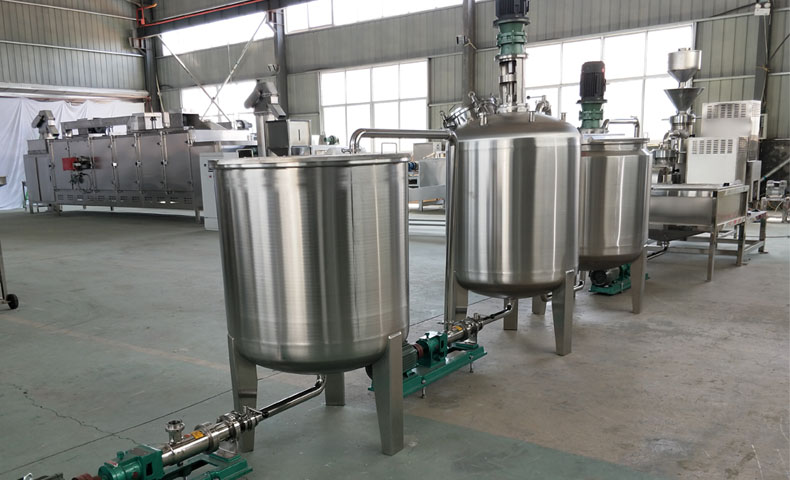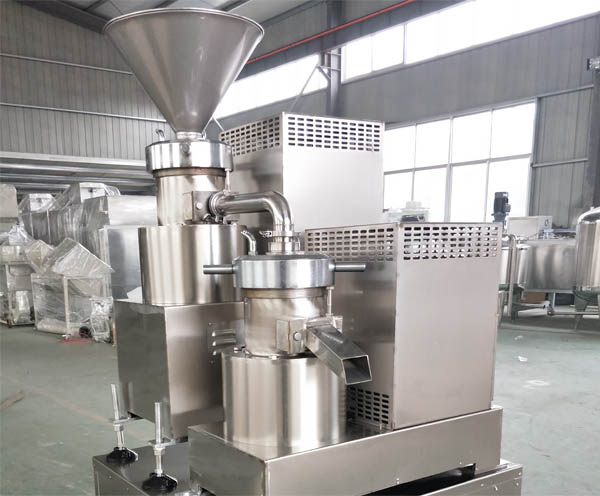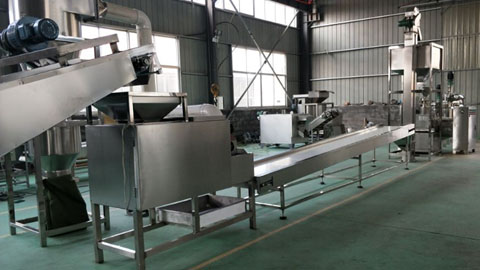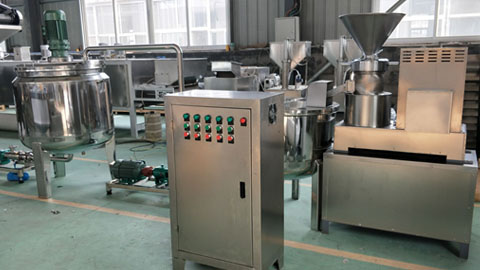Peanut butter, a global gourmet delicacy, has not only gained popularity for its rich and unique flavor, but has also become a nutritional treasure trove for vegetarians and fitness enthusiasts due to its rich content of proteins, healthy fats, Vitamin E, and a variety of minerals. According to Grand View Research, the global peanut butter market size has climbed to USD 4.23 billion by 2022 and is expected to continue expanding at a CAGR of 3.2% till 2030. This significant market growth not only reflects the importance of peanut butter in the global food culture, but also heralds the inevitable modernization and transformation of its production methods.

Peanut butter’s market position and nutritional value
The nutritional value of peanut butter is one of the key factors in its popularity. As an important source of vegetarian protein, it meets the needs of more and more people who pursue a healthy diet. Whether it is a toast spread for breakfast or a flavorful addition to baked goods, peanut butter can add flair to food with its unique taste and comprehensive nutrition.
Core advantages of modernized peanut butter production line
In order to meet the growing market demand and consumers’ pursuit of higher product quality, modernized peanut butter production lines have emerged. These production lines not only improve production efficiency, but also show significant advantages in product quality, flexibility and environmental protection.

Multi-functional processing capability: Modern peanut butter production lines are not only limited to peanut processing, but can also handle tree nuts such as almonds and cashews, as well as oilseeds such as sesame and sunflower seeds. In addition, by adding flavorful ingredients such as chocolate and honey, manufacturers can respond quickly to market trends and launch diverse new products.
Intelligent production system: The introduction of PLC automatic control system, online quality inspection device, intelligent temperature control system and automatic packaging and palletizing equipment ensures precise control of the production process and consistency of product quality. These intelligent configurations not only improve production efficiency, but also reduce the risk of human error.
Sustainable features: Modern production lines emphasize the application of environmentally friendly technologies, such as heat recovery systems, water-saving washing devices and low-energy motors. These designs not only reduce production costs, but also comply with global environmental trends and help companies realize green production.
Customized production capacity: The production line can adjust its capacity, product form and packaging specifications according to customer needs. This flexibility enables enterprises to meet the needs of different customer groups and thus gain an advantage in market competition.
The key equipment and technology of peanut butter production
The successful operation of a modern peanut butter production line cannot be separated from a series of key equipment and technology. Pre-treatment systems include photoelectric sorting machines, infrared roasting equipment and rapid cooling systems, which together ensure the purity of raw materials and the best flavor. Core processing equipment such as the ultra-micro peanut butter making machine and Homogenizing Emulsification System achieve the fine taste and uniform texture of peanut butter. Aseptic filling equipment and strict quality control system further extend the shelf life of the product and ensure the safety and reliability of peanut butter in the hands of consumers.

The industry development trend and innovation direction
With the growing consumer demand for healthy food and the continuous progress of technology, the peanut butter industry is developing in the direction of intelligence, greening and personalization. The development of functional peanut butter, such as adding probiotics, fortifying vitamins and adopting low-sugar and low-fat formulas, is becoming a new favorite in the market. Innovations in production processes, such as low-temperature cold-pressing technology, ultrasonic-assisted extraction and supercritical fluid extraction, are also improving the quality and nutritional value of the product. Meanwhile, innovations in packaging technology, such as biodegradable packaging materials, smart packaging and portable small packages, are bringing new market opportunities for peanut butter products.
Suggestions for choosing quality suppliers
When choosing peanut butter production line suppliers, enterprises should comprehensively consider the supplier’s industry experience, equipment scalability, energy consumption indicators and after-sales service guarantee, etc. KMEC, as a leading supplier in the industry, provides customized solutions, turnkey services, professional technical support and perfect after-sales service network, which is the ideal choice for many enterprises. By referring to successful cases, enterprises can better understand the strength and service level of suppliers and make informed decisions.



Peanut butter production is gradually moving towards a new era of intelligence, greening and personalization. Investing in modernized production lines not only improves product quality and production efficiency, but also helps companies seize market opportunities and stand out in the highly competitive food industry. As consumer demand for healthy food continues to grow and technology continues to advance, the peanut butter industry will continue to maintain strong momentum, bringing more delicious and healthy enjoyment to consumers around the world.

